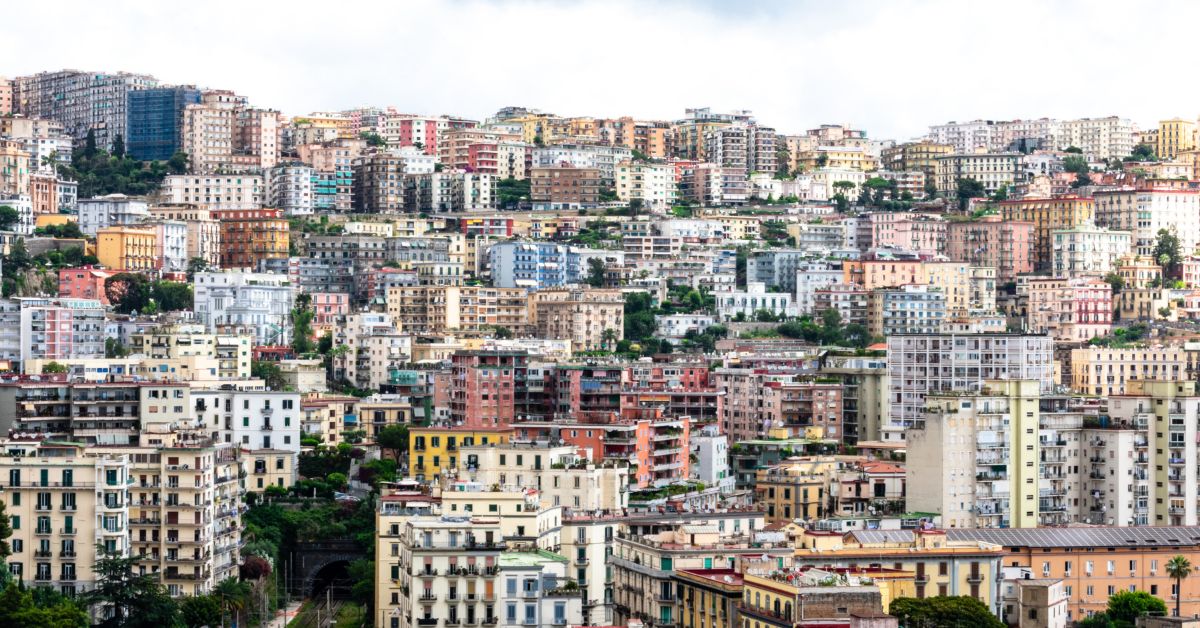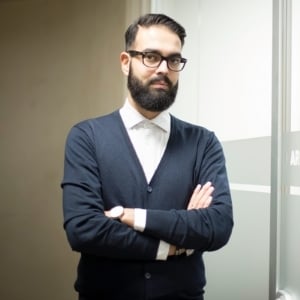Sustainability is a topic that has become part of every aspect of everyday life.
The worlds of architecture and construction are no exceptions.
The last Salone del Mobile, for example, was held under the umbrella of sustainability with initiatives on the theme that was also the heart of the Fuorisalone events.
Not only that, sustainability was also discussed at the awarding of the Compasso d'Oro prize last June.
However, the spontaneous reflection on the subject concerns the danger of misuse of this term. The most significant consequence is the emptying of its content.
Almost as if sustainability has become an alibi for the project, where perhaps the project is not qualitatively optimal but respects the parameters of sustainability.
So how to approach truly sustainable construction in the right way?
Danilo Premoli, an architect and journalist who has been active in the architecture and design sector for years, as well as founder of the blog Office Observer, asked Vince Di Dato, General Director of Xerdan Ltd, a company active in the field of Comprehensive Sustainability, strategic design and solutions for crises and emergencies and, in dialogue, Helen Scandellari, Business Sustainability Officer of Manni Group.
How did Xerdan come about and what does it work on?
The realisation that something strong and concrete had to be done to evolve a more sustainable, safer way of living and to promote synergetic actions led to the creation of Xerdan in 2015.
The goal is to turn big challenges into opportunities, finding a better way to live and prosper, instead of being fearful and dying from all the changes occurring around us.
The genesis of Xerdan stems from years of personal experience, starting in the 1990s when the recurring response to climate appeals was a lack of scientific data. Subsequently, with the first meetings of the IPCC (Intergovernmental Panel on Climate Change) and the first available scientific data, the first rumours about sustainability began to circulate.
But the problem, as evidenced by events and not just data, is global and systemic, not just specific and local. This is why Xerdan works on the concept of Comprehensive Sustainability, because the range of topics to be addressed is quite broad. There is a real need to find solutions, in the knowledge that we all have to work together to find new and effective ones.
What value does the term sustainability have for Manni Group and how is it interpreted?
By virtue of its industrial nature, Manni Group has always sought to share concrete actions aimed at sustainability with all stakeholders.
In 2016, the Business Sustainability Programme was born and brought to the Board, which is reviewed annually and finds applicability both in Italy and abroad.
It is an ISO 14064-certified initiative to reduce the impact of production on the environment according to green assets, such as greenhouse gas emissions, scope 1, 2 and 3. The commitment to reduce production-related CO2 emissions goes hand in hand with the desire to penetrate the market with products that are themselves as sustainable as possible. In this respect, the Manni Group has invested heavily in Research & Development, particularly over the past five years. The concrete commitment was to bring much more sustainable materials and architectural solutions to the market than before. As highlighted by the Sole 24 Ore's 'Leaders in Sustainability' initiative, the Group's intention is to highlight how factors broken down by ESG (Environmental, Social & Governance) criteria can contribute to improving not only the economic performance of companies, but also their collective and social well-being.
As proof of its commitment, Manni Group in 2021 mandated a specialised company to conduct an analysis of ESG parameters and formulate a rating based on the analysed KPIs. This percentage value represents the starting point to be improved with concrete actions aimed at achieving group goals.
Environmental, social and economic sustainability. What impact do they have on architecture?
We have always talked, and continue to talk, about sustainable development,' says Vince Di Dato. But sustainable development is a 1980s concept that is no longer able to meet the demands of the events we are experiencing. True sustainability is what is referred to as Comprehensive Sustainability, which actually has four pillars. In addition to Environment, Social and Economy (previously referred to as Governance), there is also Cultural Sustainability, which takes into account not only the societies in which we find ourselves, e.g. the Western productive society, but also the different cultures in order to define the most correct approach to dealing with life on this planet.
In the early 2000s, the concept of sustainability was something strange and far removed from reality. Now it has become widespread and this has been a great achievement in terms of awareness and sensitisation.
The four pillars must lead to the definition of objectives, the objectives must respond to indicators and the indicators must, in turn, be measurable with parameters.
However the important aspect lies in the objectivity of the parameters, otherwise each company could evaluate itself according to self-defined parameters, sometimes resulting in what is called greenwashing, which has little to do with sustainability and a lot to do with image.
We are part of a system that must be considered at all levels and scales: object – project – producer – society – planet.
What was Manni Group's approach to guaranteeing the declared sustainability data?
To provide assurance of its sustainable way of acting, Manni Group draws up an annual report which it shares with all stakeholders and which is verified by an external body according to regularly monitored and updated parameters and KPIs.
This is a demanding activity for the company but essential to ensure transparency and reliability in the market, as well as to truly enact sustainable policies with tangible results.
How did the perception of Manni by suppliers and customers change when sustainability became a declared value?
Most of the Manni Group's suppliers are either global giants dealing in chemicals or large steel mills from all over the world. Manni's corporate choice was to extend ESG mapping to the business of key strategic partners, aligning them with corporate sensibilities. The latter were assessed according to the same KPIs used for Manni with the ESG rating. An attempt was therefore made to align the Manni Group's sustainable DNA with that of its main suppliers and partners by measuring it through objective criteria.
From a customer perspective, Manni Group works with major national and international players who have shown how sustainable the company really is.
To this end, internal processes such as Lifecycle Assessment (LCA) and related Environmental Product Declarations (EPDs) of key products were implemented.
Not only that, it often happens that it is the client companies themselves who request sustainability mapping through specific platforms. The score obtained allowed the Manni Group to be certified as a sustainable company and thus to enter certain markets.
Sustainability thus becomes a business enabler in its own right, which, however, must also be demonstrated and not only declared. For example, Manni Group regularly participates in sustainable construction projects around the world. The latest is a project in Ghana, which was the result of a contest that hundreds of architects participated in. Wherever possible, Manni Group therefore seeks to provide tangible demonstrations of its sustainable contribution to the construction industry.
Spaceship Earth operations manual, Buckminster Fuller (1968)
“Paradoxically, at the present moment our Spaceship Earth is in the perilous condition of having the Russians sitting at one set of the co-pilot’s flying controls. while the Americans sit at the other. France controls the starboard engines, and the Chinese control the port engines, while the United Nations controls the passenger operation.”
These are a few lines from Fuller's work translated into Italian by Vince Di Dato. The translation took several years and was immediately revealed as futuristic, one only has to read the quoted lines and relate them to the current geopolitical situation.
The manual is of great relevance because it highlights the need to change our point of view and that we must all work together on this planet to manage it in a communal manner.
Working in emergency is the wrong approach, one should work on sustainability because it is right to do so for the common good according to a rational and creative method at the same time.
It is necessary to read the data in order to respond to economic, environmental, social and cultural needs and act accordingly, each making their own contribution.
What will sustainability look like tomorrow? How do you imagine the buildings and cities of the future?
To be able to think about a building or a city of the future, – says Helen Scandellari – we have to reckon with how much we are able to create awareness among the new generations that will carry on what we are currently envisaging. Manni Group's goal is to be able to provide solutions today that combine environmental features with aesthetic values that will be the legacy of tomorrow. It is no coincidence, in fact, that many investments are focused on aesthetically relevant interventions such as greenroofs, for which Milan is also an ambassador thanks innovative constructions such as the Bosco Verticale.
The commitment of a company like Manni is to also provide off-site solutions, which can reduce pollution, waste and risks on site, while being aware that interventions on the existing building stock may not always be 100% sustainable. Italy has an architectural heritage which it is important to enhance but which is difficult to replace in the name of sustainability. Northern European countries, on the other hand, have a different real estate structure that produces a different visual impact, with respect to which, perhaps, the need may be to intervene to enhance façades through sustainable construction that enriches the landscape.
Generally speaking, however, the city of the future will depend on how much care and attention future generations take in continuing to implement sustainable solutions in the right way.
A global emergency like Covid - says Vince Di Dato - has highlighted how our cities, as they were conceived hundreds of years ago, no longer function. Urban places have been transformed according to a specific means of private transport: the automobile.
The most impactful data produced by the pandemic comes from the way we relate to work, first and foremost from commuting. It would therefore be worth reflecting and initiating a change in this direction.
In general, it is important to have a vision that determines a narrative in the sense of how we tell the poetics of the project that is based on data.
The cities of the future will be different, much greener, with buildings that are also green, very connected and integrated with their surroundings and the countryside.
We will be called upon to remake cities while always respecting the pillar of culture and thus of historic centres that are repositories of memory. Human life will be lived on a continuum between nature and the man-made environment, between private and public space where people can meet in safety to socialise.
Fuller's invitation, urbi et orbi
“I invite you to contribute to living without destroying the environment or the monuments or traces of humanity through the ages, or without debasing the integrity of love, perspective and harmonious creativity”.
An invitation addressed first and foremost to planners, so that the theme of sustainability is first substantiated in the mindset and then in the modus operandi.
From idea to execution, environmentally, socially, economically and culturally.


